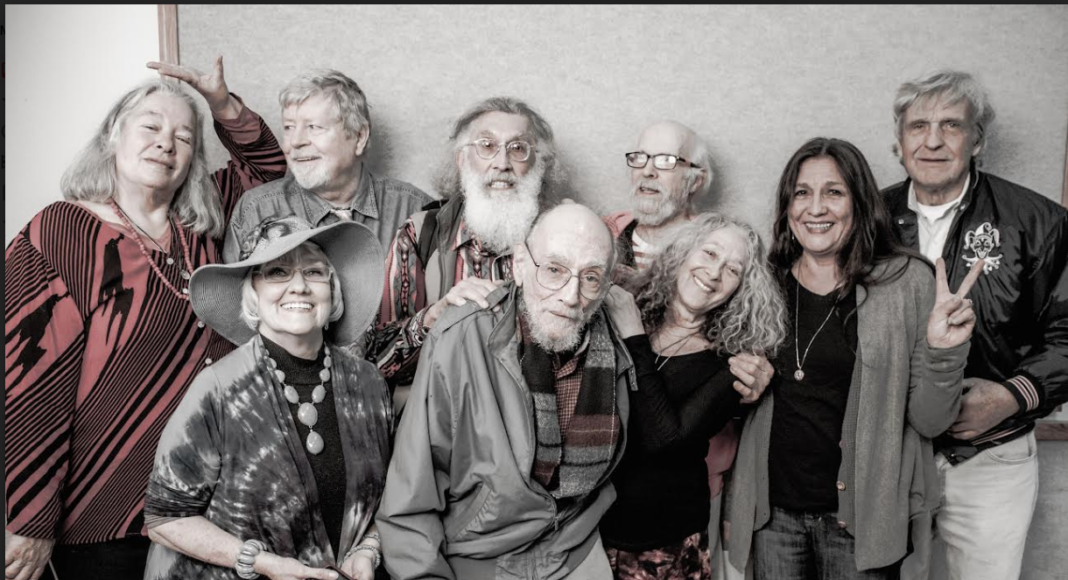As a reporter, Lee Quarnstrom worked for numerous publications around the U.S., including the Associated Press, the Register-Pajaronian and The Mercury News. He was also editor of Hustler magazine and a bookseller in Greenwich Village, and traveled with Ken Kesey’s peripatetic Merry Pranksters on their multi-colored bus “Furthur.”
He also wrote for Chicago’s famed City News Bureau, which was one of the first cooperative news agencies and considered the “school of hard knocks” for Novice journalists. He was a mailman and had a stint as a “dynamiter” on a trail crew in Olympic National Park.
Quarnstrom died Wednesday at his home in La Habra. He was 81.
He chronicled his life in the 2014 memoir “When I Was a Dynamiter! Or, How a Nice Catholic Boy Became a Merry Prankster, a Pornographer, and a Bridegroom Seven Times.”
Longtime Mercury reporter Paul Rogers, who worked with Quarnstrom at that paper’s Santa Cruz bureau from 1990-95, described his friend as a “bon vivant” who had “multiple amazing chapters” in his life.
“He really was a one-of-a-kind character,” Rogers said. “He packed about five lifetimes into one lifetime. He was one of those people who walked down the street and everyone would know him, and they’d either say ‘hi’ or shout obscenities at him.”
Quarnstrom began his career in journalism as editor of his high school paper in Winnetka, Wis. After his stint on a three-man trail crew as a dynamiter—where Rogers says he ironically discovered the solitude of the wilderness and the American landscape—his life took him to Mexico City, and then to Seattle, where he worked for the AP.
He then moved to the Bay Area where he worked for the San Mateo Times.
It was there that Quarnstrom scored an interview with “One Flew Over the Cuckoo’s Nest” author Ken Kesey, whose newest book “Sometimes a Great Notion” had just come out.
That meeting sent Quarnstrom on a new path, where he discovered the Merry Pranksters and the on-the-road lifestyle that was reshaping the nation, Rogers said.
“He went up there and was just blown away with what he found,” he said. “Lee was so taken by all of this that a few days later quit his job and rented a cabin near where Kesey lived.”
Thus ensconced in the Haight-Ashbury haze of the era, Quarnstrom hung out with the Grateful Dead, was friends with gonzo journalist Hunter S. Thompson and consorted with Neal Cassidy, the man who was the inspiration for Jack Kerouac’s “On the Road” Dean Moriarty character.
At some point during this time, Quarnstrom was married onstage to a woman referred to as “Space Daisy,” a wedding where the band Quicksilver Messenger Service played and music promoter demi-god Bill Graham hosted.
“He was at ground zero as the beat generation transformed into the psychedelic era,” Rogers said. “He was there, a witness to history for all of it.”
After his stint with the Merry Pranksters, Quarnstrom came to Watsonville to work for the Register-Pajaronian, where he stayed from 1969-78.
“He always loved Watsonville,” Rogers said. “He used to drive down there regularly to have lunch with city leaders and old-timers. He thought it was a really genuine part of California. He admired the people, he admired the landscape. He thought that sometimes it didn’t get its due.”
After that, Quarnstrom got a job as an editor at Hustler, an infamous pornographic magazine whose owner Larry Flynt had been recently shot for showing a Black man and a white woman together. Quarnstrom and Flynt’s wife, Althea, kept the magazine running during his recovery, Rogers said.
After his time with Hustler, Quarnstrom worked on a handful of Hollywood game shows before coming to the Mercury, where he remained for the rest of his career.
Former Watsonville Police Chief Terry Medina says that he knew Quarnstrom as one of the many reporters working a series of murders in Santa Cruz at the time.
“We were just about interacting every day,” Medina said.
But Quarnstrom did not fit the mold that most reporters did, he added.
“He was better than the average writer, but he was just living life to the fullest all the time,” Medina said. “He was fun to be around.”
Local author and historian Geoffrey Dunn, who was friends with Quarnstrom for 50 years, says he focused much of his writing on local and state politician Henry J. Mello. He also covered the United Farm Worker issues in the Pajaro Valley.
Dunn says that Quarnstrom had a sarcastic, cynical sense of humor and an occasional public persona as a “rough and gruff bully.” The latter, however, was not the image of the man they knew.
“Privately, he was a real sweetheart,” Dunn said. “He really enjoyed life. He considered himself a Buddhist-with a lower-case b. He had an acceptance of what life throws at you.”















Wow. Sometimes a Great NATION. Seriously? And the description of the names in the photo is mind-boggling boggled. High are you? I could find more errors but 2 is enough for me. And your “captha” doesn’t work! Wow. Just wow. On the 4th try it works. Great job, even on that.